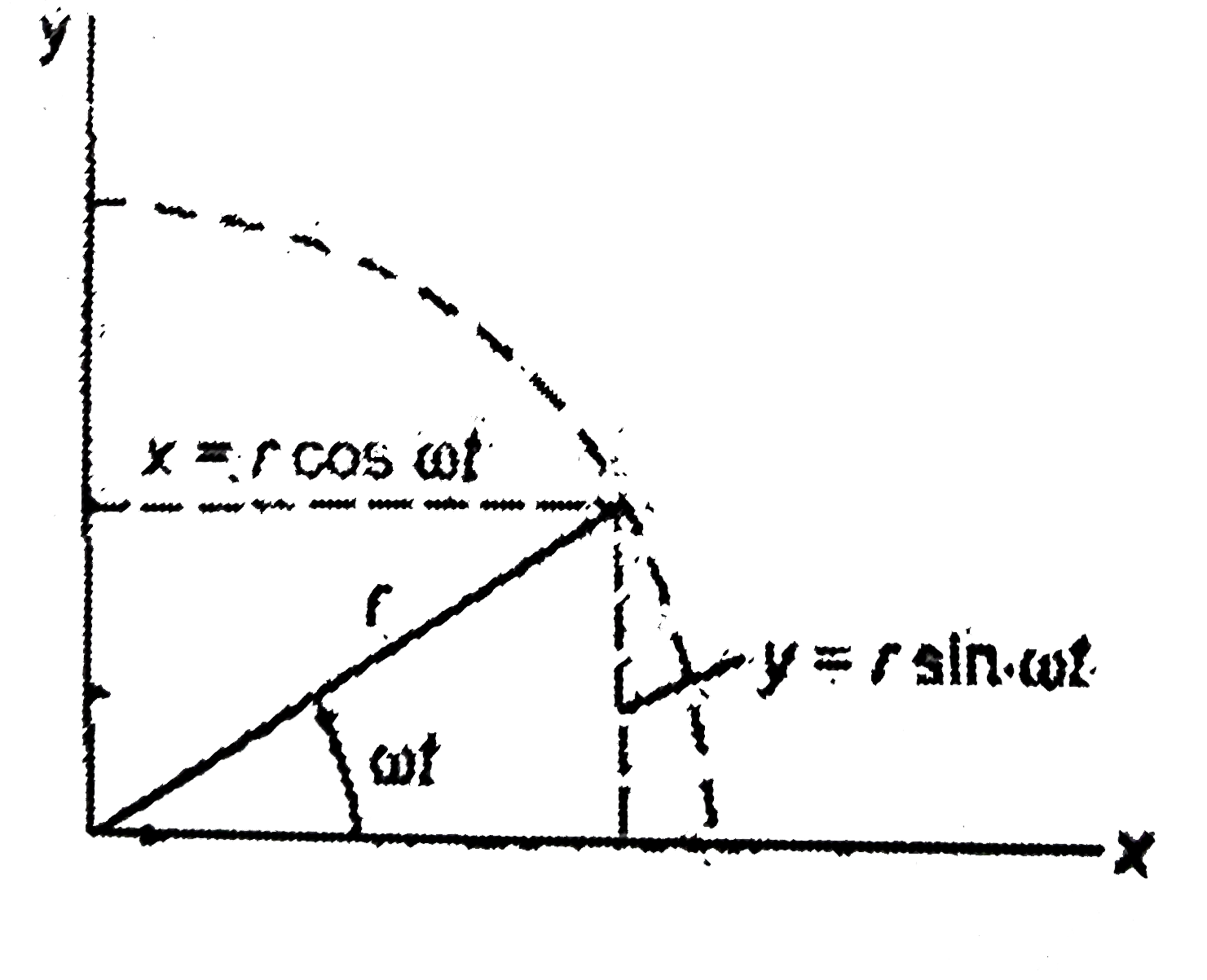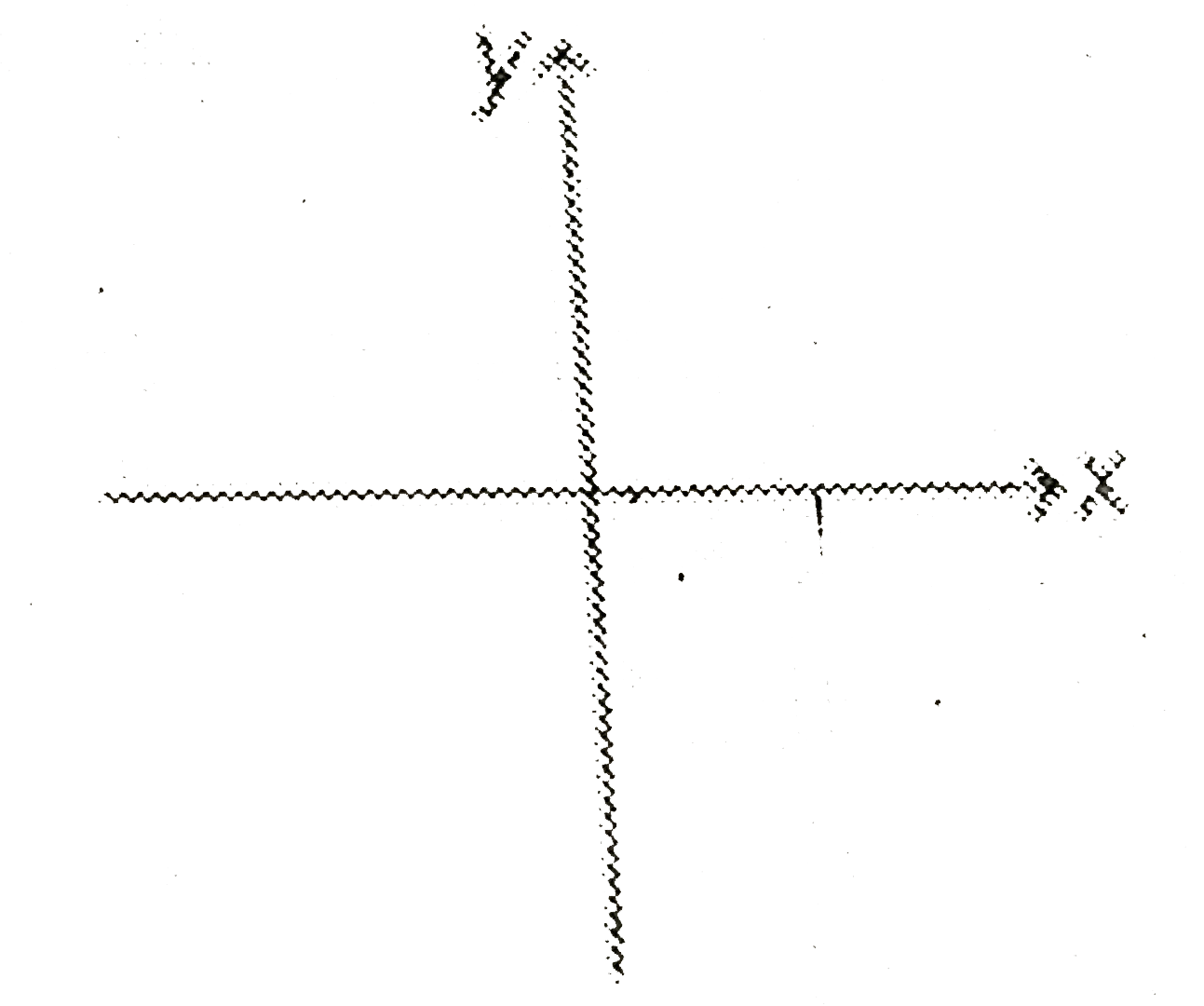The position vector of a particle is r=asinωtˆi+acosωtˆj
The velocity of the particle is
parallel to position vecor
perpendicular to position vector
directed towards origin
directed awa from the origin
The correct Answer is:B
Given, r=(asinωt)ˆi+(acosωt)ˆj
∴V=drdt=(−aωsinωt)ˆj+(aωcosωt)ˆi
r.v=0⇒r⊥v
Topper's Solved these Questions
- MOTIONBOOK - DC PANDEYCHAPTER - MOTIONEXERCISE - Check Point 4.2
20 Videos
- MOTIONBOOK - DC PANDEYCHAPTER - MOTIONEXERCISE - Check Point 4.3
10 Videos
- MOTIONBOOK - DC PANDEYCHAPTER - MOTIONEXERCISE - Medical entrances gallery
19 Videos
- MEASUREMENT AND ERRORSBOOK - DC PANDEYCHAPTER - MEASUREMENT AND ERRORSEXERCISE - Subjective
19 Videos
- MOTION IN A PLANEBOOK - DC PANDEYCHAPTER - MOTION IN A PLANEEXERCISE - (C )Medical entrances gallery
32 Videos
Similar Questions
The position vector of a particle is given by →r=kcosωˆi+ksinωˆj=xˆi+yˆj, where k and ω are constants and t time. Find the angle between the position vector and the velocity vector. Also determine the trajectory of the particle.
View SolutionThe motion of a particle is given by
y=asinωt+bsinωt
The motion of the particle is
View Solution
Knowledge Check
The position vector of a particle is →r=acosωti+asinωtj, the velocity of the particle is
Aparallel to the position vectorBperpendicular to the position vectorCdirected towards the originDdirected away from the originThe position vectors os a particle is r=(acosωt)ˆi+(aωt)ˆj.The velocity of particle is
Adirectiont towards the originBdirectionaway from the originCparallelto the position vectorDperpendicular to the position vectorThe motion of a particle is given by x=Asinωt+Bcosωt. The motion of the particle is
Anot simple harmonicBsimple harmonic with amplitude A + BCsimple harmonic with amplitude (A+B)2Dsimple harmonic with amplitude √A2+B2
The motion of a particle is given by x=Asinωt+Bosωt. The motion of the particle is
View SolutionConsider a particle moving in the x−y plane according to r=r(cosωtˆi+sinωtˆj), where r and ω are constants. Find the trajectory, the velocity, and the acceleration.

View SolutionPosition vector of a particle moving in x−y plane at time t is r=a(1−cosωt)ˆi+asinωtˆj. The path of the particle is
View SolutionA particle moves so that its position vector varies with time as →r=Acosωtˆi+Asinωthai(j). The initial velocity of the particel the particle is
View SolutionA xandy co-ordinates of a particle are x=Asin(ωt)andy=Asin(ωt+π/2). Then, the motion of the particle is

View Solution